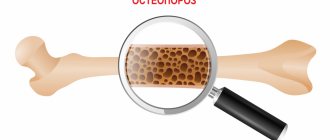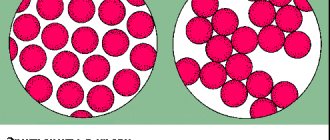Almost any problem in the human body affects the composition of the blood, so its biochemical analysis serves as the basis for diagnosis. As a result, many patients are interested in ALT and AST levels. Liver enzyme tests are the most important method for detecting severe liver diseases.
CONSULTATION ON THE RESULTS OF ANALYSIS AND ULTRASOUND — 500 rubles. (at the patient's request)
CLICK TO SIGN UP
These substances are representatives of the enzyme group, which normally have low levels in the blood. In diseases accompanied by cell destruction, the indicators of these enzymes in analyzes increase several times and even tens of times, which confirms the presence of a pathological process.
Importance of liver enzymes
The content of the article
A separate class of enzymes are transferases, catalysts for the transfer of molecular residues and functional groups from molecule to molecule.
Transferases are involved in the transformation of nucleic acids and amino acids, lipids and carbohydrates. The most significant liver enzymes are considered to be ALT and AST, which perform several tasks at once.
- Molecular intracellular synthesis ensures sufficient liver functionality.
- Enzymatic diagnostics, carried out by measuring the degree of enzyme activity in the blood. The reliability of this method is based on the fact that liver enzymes in a healthy person are contained inside the cell, leaving it only after the death of the cell itself.
- The prognostic role of enzymes is associated with the characteristics of their dynamics in the blood, which directly depends on the nature of the course and severity of the disease.
- The medicinal role of enzymes is to use special enzyme preparations when they are deficient in the body.
What is alanine aminotransferase (ALAT)
The functioning of the human body is ensured by multiple chemical processes that are both cyclical and interconnected, continuous and consistent. Enzymes play a major role in blood filtration and digestion systems. Alanine aminotransferase (ALAT) is the main liver enzyme involved in amino acid metabolism. Most of the enzyme is found in the liver, with small amounts in the kidneys, cardiac and skeletal muscles.
Alanine itself is important as a source of rapid glucose production to nourish the brain and central nervous system. Studying the level of ALT and AST in the blood greatly facilitates the diagnosis and prognosis of severe diseases and damage to the liver, heart and pancreas.
The specificity of ALT makes it possible to differentiate diseases according to the degree of excess of standard values, which is very important when symptoms are weak and the manifestations of various diseases are similar. Using ALT readings in combination with other tests, the doctor can determine the extent of organ damage and make a prognosis for the course of the disease.
Alanine aminotransferase (ALT)
Other names : Bilirubin total, Total bilirubin, TBIL.
Service code for ordering 1042 (Alanine aminotransferase) in the Sinevo medical laboratory.
Other names: glutamate-pyruvate transaminase, serum glutamate-pyruvate transaminase, SGPT, A lanine aminotransferase ( ALT ) , Serum glutamic-pyruvic transaminase, SGPT, Alanine transaminase, AST/ALT ratio.
General information:
Alanine aminotransferase (ALT) is an enzyme that is found in all cells of the body, mainly in the liver and kidneys, but also in the heart and muscles. Normally, ALT activity in the blood is very low. During conditions associated with liver cell damage, the enzyme is released into the bloodstream; ALT levels in the blood may rise 1-3 weeks before the onset of symptoms and a week before bilirubin levels rise in the blood.
In laboratory diagnostics, a blood test for ALT is used to diagnose and evaluate the effectiveness of therapy for liver diseases, and less commonly, heart and pancreas diseases. Together with other tests that perform the same tasks, the ALT test is part of the so-called liver tests.
Important! An increase in ALT levels is also possible with myocardial infarction, diseases of the muscles and pancreas. Therefore, in order to determine the location of the pathological process, the activity of the ALT enzyme in the blood is usually determined together with another enzyme - AST. With an increased concentration of one or both indicators, the ALT/AST ratio is calculated - the de Ritis coefficient. It allows you to indirectly judge in which organ the damage occurred.
Intramuscular injections, as well as intense physical activity, can increase ALT activity in the body.
In some patients, liver damage and, as a result, an increase in ALT activity can be caused by taking dietary supplements, oral contraceptives, and vitamins. Therefore, it is necessary to inform your doctor not only about all medications you are taking, but also about nutritional supplements.
In addition, frequent consumption of fast food can lead to a slight increase in ALT activity due to liver damage; if nutrition is normalized, ALT activity returns to normal.
Indications for use:
- for symptoms of liver disease: weakness, fatigue, loss of appetite, nausea, vomiting, abdominal pain and bloating, yellowing of the skin and whites of the eyes, dark urine, light-colored stool, itchy skin;
- in the presence of factors that increase the risk of liver disease: previous hepatitis or recent contact with hepatitis infection, excessive alcohol consumption, hereditary predisposition to liver disease, taking medications that can damage the liver, excess weight or diabetes;
- diagnosis and differential diagnosis of liver diseases;
- donor screening;
- examination of contact persons in the outbreak of viral hepatitis;
- myocardial pathology;
- diseases of skeletal muscles;
- determining the effectiveness of treatment of liver diseases.
Method: kinetic (International Federation of Clinical Biochemistry (IFCC))
Analyzer : Cobas 6000
Units of measurement: U/l
Material for research: venous blood serum
Preparation:
- Children under 1 year of age should not eat for 30-40 minutes before the test.
- Children aged 1 to 5 years should not eat for 2-3 hours before the test.
- Take on an empty stomach (after sleep and 8-12 hours of fasting). It is permissible to drink only clean non-carbonated water (up to 200 ml) (with the exception of glucose testing).
- Do not consume spicy, fatty, fried foods or alcohol 1-2 days before the test.
- Avoid physical and emotional stress 1 day before the test.
- Do not smoke for at least 1 hour before the test.
- It is not recommended to take it after X-rays, physiotherapeutic procedures and instrumental examinations.
Interpretation of results:
The result of laboratory tests is not a sufficient basis for making a diagnosis. Interpretation of the results and diagnosis is carried out only by the attending physician.
Reference values:
- Adults: men: <41; women: <31
- Children: 1 day: <31;
- 2-5 days: <49;
- from 6 days to 6 months: <56;
- 7 to 12 months: <54;
- from 1 to 3 years: <33;
- from 4 to 6 years: <29;
- from 7 to 12 years: <39;
- from 13 to 17 years old boys: <27, girls <24
Possible causes of increased ALT levels:
- shock, severe burns;
- Infectious mononucleosis;
- acute lymphoblastic leukemia;
- cardiovascular pathology: myocardial infarction, heart failure, myocarditis;
- acute pancreatitis;
- severe gestosis in the second trimester of pregnancy;
- myositis, myodystrophy, muscle injuries, rhabdomyolysis, polymyositis and dermatomyositis;
- intramuscular injections;
- obesity
- necrosis of liver cells of any etiology (viral hepatitis, toxic liver damage, liver cirrhosis);
- extensive trauma and necrosis of skeletal muscles;
- cholestatic and mechanical jaundice;
- liver cancer (primary and metastatic);
- fatty hepatosis;
- chronic alcoholism;
- severe pancreatitis;
- severe burns;
- primary carnitine deficiency.
Possible reasons for a decrease in ALT levels:
- genitourinary system infections;
- tumors of various origins;
- deficiency of pyridoxal phosphate-vitamin B6 due to poor nutrition, alcohol consumption;
- liver diseases due to alcoholic hepatitis, fatty infiltration of the liver;
- pregnancy;
- severe liver damage - extensive necrosis, cirrhosis (when the number of cells synthesizing ALT is significantly reduced).
Substances that increase ALT levels:
Disopyramide, Quinidine, Amiodarone, Sulfanilamide, Clindamycin. Lincomycin, Azithromycin, Erythromycin, Tetracycline, Captopril, Methyldopa, Amitriptyline, Warfarin, Heparin sodium, Ranitidine, Cimetidine, Azathioprine, Cyclosporine, Omeprazole, Clavulanic acid, Metoprolol, Procaine, Papaverine, Pindolol, Acetylsalicylic acid, Diclofenac, Ibuprofen, Indomethacin , Naproxen , Piroxicam, Phenylbutazone, Ganciclovir, Didanosine, Zalcitabine, Levamisole, Ketoconazole, Clotrimazole, Dapsone, Nitrofurantoin, Asparaginase, Dacarbazine, Tamoxifen, Chlorambucil, Mercaptopurine, Methotrexate, Cytarabine, Thioguanine. Levodopa, Probenecid, Ondansetron, Phenobarbital, Isoniazid, Ethambutol, Ethionamide, Carbamazepine, Verapamil, Mitoxantrone, Pyrazinamide, Halothane, Disulfiram, Allopurinol, Propylthiouracil, Bromocriptine.
Substances that reduce ALT levels:
- aspirin,
- phenothiazines,
- interferon.
Where to get tested for ALT
take a blood test for ALT at any Synevo point in Minsk, Baranovichi, Bobruisk, Borisov, Brest, Vitebsk, Gantsevichi, Gomel, Grodno, Zhlobin, Lida, Mogilev, Mozyr, Molodechno, Novogrudok, Novopolotsk, Orsha, Pinsk, Polotsk, Rechitsa , Svetlogorsk, Slutsk, Smorgon, Soligorsk.
Why is an ALT test done?
The endogenous enzyme ALT serves as a reliable marker of liver tests - liver pathologies in diagnostic laboratory practice. Alanine aminotransferase is formed due to intracellular synthesis, so it is present in the blood in small doses.
Blood test for ALT
in a healthy person it shows a minimum value. Diseases or damage to the liver cause the death of its cells, and the intracellular liver enzyme ALT is released into the blood, which, along with other indicators, is a fairly informative indicator of disease processes. Any deviation of the enzyme indicator from the standard range, especially upward, is an indisputable sign of an incipient liver disease or an extensive process of its destruction
Elevated ALT levels may also be observed in pregnant women, during a heart attack, and in certain pathological conditions. An increase in the dose of ALT in the blood is observed before the manifestations of jaundice, which allows for early diagnosis of liver diseases.
Reasons for increased ALT
An increase in ALT levels may be due to:
- myositis;
- intrahepatic cholestasis;
- burns, severe intoxication, muscle injuries;
- autoimmune thyroiditis;
- liver pathologies (hepatitis caused by viruses and alcohol, fatty hepatosis, cancer, cirrhosis);
- heart diseases (myocarditis and other pathologies that are accompanied by damage to myocardial cells);
- acute pancreatitis.
Also, the amount of ALT can be increased in cancer, progressive leukemia and obesity of III-IV degree. During a heart attack, this indicator practically does not change.
Who is prescribed an ALT test?
An ALT test is prescribed in the presence of certain symptoms and factors:
Symptoms of liver disease:
- weakness, lack of appetite, nausea and vomiting;
- abdominal pain, jaundice;
- dark urine and light-colored feces.
Risk factors for liver disease:
- previous hepatitis,
- alcohol addiction,
- diabetes and obesity,
- hereditary reasons
- taking medications that have an aggressive effect on the liver.
ALT blood test is carried out for the following purposes:
- checking for possible liver damage due to injury;
- identification of drug and alcohol addiction within the framework of a set of interrelated indicators;
- assessment of the effect of anticholesterol therapy and a number of other drugs that are relatively toxic to the liver;
- Finding out the cause of jaundice in a patient - liver disease or blood dysfunction.
A patient who is prescribed an ALT test should inform his doctor about the presence of reasons that could reduce the accuracy of the test results:
- taking certain medications, dietary supplements and herbal infusions (oral contraceptives and aspirin, warfarin and paracetamol, infusions of valerian and echinacea);
- possible pregnancy;
- presence of allergies;
- completing a course of intramuscular injections;
- rehabilitation period after cardiac surgery or cardiac catheterization;
- active physical activity before the test.
The test is performed on the patient's venous blood and results can be available in approximately 12 hours.
ALT analysis
An analysis to determine the concentration of this substance in the body is used to diagnose liver disease and monitor the effectiveness of prescribed therapy. The main indication for the study is suspicion of acute or chronic hepatitis of viral or toxic origin, cirrhosis of the liver, primary malignant neoplasms of the organ or secondary metastatic lesions.
The growth of this substance in the body during hepatitis begins much earlier than the disease enters the icteric stage. In this way, it is possible to diagnose the disease at an early stage and begin treatment in a timely manner.
The analysis is also carried out as part of a comprehensive screening examination in order to assess the condition of the liver. The study is carried out before planned hospitalization for surgical treatment. The analysis is prescribed in conjunction with an aspartate aminotransferase test.
The level of ALT must be assessed together with other enzymes in pathologies of the pancreas and gallbladder - pancreatitis, cholecystitis, cholelithiasis. An analysis may be prescribed if the patient complains of general weakness of unknown etiology, fatigue, icteric skin and sclera, abdominal pain, a feeling of heaviness in the right hypochondrium, nausea, vomiting.
This analysis should also be performed in case of myocardial infarction and myocarditis. But in case of heart damage, assessing the ALT level is of secondary importance. The study is prescribed if the patient is suspected of myositis, myodystrophy, pain in the heart muscle, which cannot be explained by excessive physical exertion or another objective reason.
All donors are required to undergo this test.
The concentration of the level of this substance in the body must be assessed in case of chronic diseases, before prescribing medications - antitumor, antituberculosis. The study is also prescribed to assess the condition of the liver over time to assess the tolerability of a particular drug.
ALT elevation levels
The standard ALT indicator as part of the diagnostic complex “blood biochemistry” may differ slightly in different laboratories, but on average the limits of this indicator for men are 10–40 U/l, for women – from 7 to 35 U/l. The criteria for differentiating diseases are levels of excess of the ALT norm:
Minor:
- taking medications and chemicals (antibiotics and barbiturates, chemotherapy and drugs),
- cirrhosis of the liver,
- fatty liver disease;
Moderate and medium:
- alcohol poisoning,
- some forms of hepatitis,
- growth problems in adolescents;
High:
- cancer tumor necrosis,
- viral hepatitis,
- state of shock.
Data on microelements and vitamins
Often, normal blood biochemistry levels are checked when clarifying vitamin levels in men or women. Attention should be paid to sodium and potassium. If there is too much sodium, you may experience muscle cramps, irritability and excessive thirst. A minimal amount of the element leads to headaches, the desire to constantly sleep, vomiting, and coma.
If potassium is elevated, arrhythmia, underestimation of blood pressure, and confusion are possible. Vomiting and nausea are signs of low potassium, and sometimes the condition leads to involuntary bowel movements or urination.
How does the level of alanine aminotransferase in hepatitis depend on gender?
Russian scientists, having examined 320 people, including both sick people and healthy people (control group), found that in women with chronic hepatitis, the ALT indicator in 78.6% of cases does not correspond to the severity of the disease. Some patients even had normal alanine aminotransferase levels.
In men, the number of cases of hepatitis not accompanied by an excess of the concentration of this enzyme was only 21.4%, that is, the difference between the sexes is 3.7 times. Moreover, even with approximately the same severity of the disease, in women this figure was 1.5 times lower.
The female body has great potential to combat liver pathology, so if a representative of the fairer sex has clear signs of “liver problems,” then one test
for alanine aminotransferase is not enough - it may not be informative. At a minimum, you still need to undergo an ultrasound of the liver.
In order to get a real picture of the functioning of the liver, it is necessary to carry out other liver tests, then it is possible to more accurately say whether a woman has this pathology or not. Representatives of the fair sex often experience a latent course of chronic hepatitis, when symptoms of liver damage appear later, in the presence of pronounced, sometimes irreversible, changes. In addition, they are characterized by a more rapid restoration of normal ALT levels after Botkin’s disease, which is also associated with the physiological characteristics of the female body.
All these factors must be taken into account when examining men and women for the presence of liver pathologies.
Dependence of alanine aminotransferase levels on gender in viral hepatitis
ALAT norm
with various types of hepatitis it can increase 20 or even 100 times. In this case, the cause of this pathology (viruses, poisoning, hemolysis of red blood cells) does not play a role.
- In Botkin's disease, an increase in this biochemical indicator can be observed even before the appearance of jaundice and other clinical symptoms. Also, the level of ALT in the blood
may be increased for some time after recovery, returning to normal (women - 31 U/L; men - 45 U/L) after two to three weeks. - With “syringe” viral hepatitis , especially those with a chronic and protracted course (CVH), this indicator can constantly fluctuate either down or up. Sometimes it depends on the stage of the infectious process, and in some cases such jumps are difficult to explain.
- Mechanical (obstructive) jaundice also causes sudden changes in ALT concentration. With this pathology, the level
of alanine aminotransferase in the blood can rise to 600 U/L in one day, and then spontaneously return to normal within about two days.
If obstructive jaundice is due to primary liver cancer, the concentration of alanine aminotransferase remains consistently high.
Indications for biochemical blood tests
The study is carried out at the first stage of diagnosing any somatic diseases of any profile. It is mandatory to refer a patient for blood biochemistry in case of the following complaints and symptoms:
- Regular disruptions in digestion (nausea, vomiting, heaviness in the abdomen, bloating, flatulence, diarrhea or constipation, heartburn, discomfort in the hypochondrium);
- Sustained pain of any localization (headache, muscle, joint, in the area of internal organs);
- Respiratory disorders (persistent cough, shortness of breath, spasms);
- Signals from the nervous system (tremor of the limbs, chronic fatigue, insomnia, dizziness and fainting);
- Malfunctions of the genitourinary system (changes in the smell and color of urine, changes in the frequency of urination, discomfort during the process);
- Signals from the cardiovascular system (rapid or rare heartbeat, high or low blood pressure);
- Weakness of the immune system, which is expressed in frequent and long-lasting respiratory diseases;
- Pathological changes in the skin and the presence of visible tumors on the body;
- Signs of endocrine disorders (persistent thirst or hunger, sudden changes in weight, constant feeling of heat or cold).
Features of ALT norms in pregnant women
In a healthy woman, the ALT norm does not change during pregnancy and should coincide with the values before conception. In cases where ALT is slightly increased during pregnancy, causes not related to diseases can be considered:
- course of intramuscular injections;
- physical activity that is excessive for a pregnant woman;
- addiction to fast food;
- uncontrolled intake of dietary supplements;
- obesity;
- fetal pressure on the biliary tract, preventing the outflow of bile.
Normalization of nutrition, moderation of physical activity, weight control and choleretic drugs normalize enzyme parameters.
Dependence of ALT level on age and other indicators
During a person's life, the level of ALaT changes. You need to know this in order to correctly decipher ALT in a biochemical blood test.
- In healthy full-term newborns, the alanine aminotransferase rate ranges from 10 to 17 U/l.
- If the baby was born prematurely, then this figure can be 13–26 U/l, and the level of this substance in the blood of such babies changes almost daily.
- From the sixth day of life to six months of age, the upper limit of alanine aminotransferase increases slightly and amounts to 30 U/l. This is explained by the fact that in the first six months all biochemical mechanisms are gradually “launched” in the baby’s body, because the child adapts to existence outside the mother’s womb.
- From seven months to a year, this figure fluctuates between 13–29 U/l. At this time, the indicators for boys and girls do not yet differ.
- From one year to 14 years, the concentration of alanine aminotransferase in boys and girls is different. Moreover, in the female body it will be lower than in the male body. For girls of preschool age, the norm will be considered a concentration of 13–18 U/l, and for boys the upper limit is already 22 U/l. This trend will continue throughout your life.
Alanine aminotransferase levels in adults
- Before reaching the age of 60, the normal alanine aminotransferase level in men is 10–45 U/L, while the normal ALT level in women during this period is only 10–31 U/L.
- The level of this substance in the blood can only change during pregnancy, and then not in all women. In some cases it remains unchanged. If the expectant mother's ALT level is slightly elevated and is 35 U/L, this is not a cause for concern. An increase in ALT during pregnancy is caused by the fact that the enlarged uterus may slightly compress the bile ducts or a slight bend has appeared in the bile ducts. There is no need to be afraid of this state of affairs - after childbirth, the uterus will shrink and the indicators will return to normal. However, if the increase in ALaT in the blood during pregnancy continues, and the concentration of this substance reaches high levels, additional examinations should be performed, as this may be associated with impaired functioning of the liver, kidneys and heart.
- When people “step over” the 60-year barrier, the level of alanine aminotransferase in the blood also changes. Normally, ALT in men of this age ranges from 10 to 40 U/l, and for females it will be 10–28 U/l. The concentration of alanine aminotransferase remains at this level until the end of life.
However, a normal blood level of this substance does not always indicate that a person is healthy. In some cases, even with severe pathology of the liver and kidneys, the indicator does not change, especially for the fairer sex. That is why an isolated study of the concentration of this enzyme in the blood is very rarely prescribed. Most often, other biochemical indicators are analyzed in parallel, which allows a much more accurate understanding of the state of the body.
Deciphering the ALT analysis
Alanine aminotransferase reference values for adults:
| Norm in U/l | Norm in mmol/l | |
| men | 45 | 252 |
| women | 34 | ≈ 190 |
WHY IS ALT LEVEL DETERMINED?
ALT is an enzyme of the transaminase group, present in a certain amount in the cells of the liver, kidneys and cardiovascular system. Determining the concentration of this substance allows you to get an idea of the condition of the liver and heart, as well as the effectiveness and safety of the treatment. The basic indication for diagnosis is the suspicion of liver disease, cirrhosis, viral or toxic hepatitis (chronic and acute). Also, a blood test for ALT allows for the timely detection of malignant primary or secondary metastatic liver lesions.
An increase in the level of the above enzyme in various types of hepatitis manifests itself much earlier than the pathology progresses to the icteric stage. Thanks to this, it becomes possible to timely diagnose the disease at the initial stage of its development and begin treatment, which can significantly increase the survival rate of patients with this diagnosis.
The analysis is part of standard screening diagnostics, which allows for a comprehensive assessment of the patient’s liver condition. The study is also carried out as part of preparation before planned hospitalization for surgical intervention. Often the analysis is prescribed in combination with an analysis of aspartate aminotransferase levels.
To assess the health status of a patient suffering from diseases of the pancreas (diabetes, pancreatitis, etc.) and gall bladder (cholecystitis, cholelithiasis, etc.), determining the level of ALT is also necessary, as is identifying the amount of other enzymes. Diagnosis is carried out as prescribed by the attending physician, in the presence of objective indications - general weakness of unknown origin, fatigue, icteric coloration of the skin and sclera, vomiting, nausea, pain and heaviness in the abdomen and right hypochondrium.
In addition, identifying the level of this enzyme is included in the standard diagnostic protocol for diseases of the cardiovascular system, especially when examining patients with suspected myocardial infarction or myocarditis. In case of organic lesions of the heart muscle, determining the level of ALT is not of paramount importance. Diagnosis is carried out if the patient is suspected of having myositis, muscular dystrophy and pain in the heart, which cannot be explained by excessive physical activity or any other objective reason.
All donors without exception undergo diagnostic testing of ALT levels. The concentration of this enzyme is necessarily assessed in the presence of certain types of chronic pathologies and before prescribing hepatotoxic drugs (antirheumatic, anticancer, antituberculosis and antimicrobial), as well as to monitor the liver condition during their use.
What is aspartate aminotransferase (AST)
The endogenous enzyme aspartate aminotransferase (AST) is responsible for accelerating the release of ammonia from amino acids for its subsequent processing in the urea cycle. AST is found not only in the liver, but also in the heart muscle and brain, kidneys and spleen, lungs and pancreas. Due to the intracellular nature of synthesis, AST is successfully used in diagnosing the condition of the myocardium and liver. Using a biochemical blood test for AST and ALT, as well as their ratio, doctors are able to predict a heart attack even before the appearance of the main symptoms.
AST is also used as a marker in the differentiated diagnosis of a number of diseases:
- Cirrhosis and hepatitis;
- Metastases in the liver;
- Jaundice of various origins.
If, according to the results of the study, high ALT levels are much greater than the excess of the norm for AST, this is a characteristic sign of liver damage. If AST is increased more than ALT, the possibility of myocardial cell death should be considered. Excessive activity of alanine aminotransferase is also possible during the period of taking certain medications. Reduced values of AST and ALT are possible during pregnancy, renal failure or pyridoxine deficiency.
How to reduce ALT and AST?
The question is incorrect, but this is what patients often ask about. If the liver begins to deteriorate, you need to think not about how to quickly return enzymes to normal, but about what triggered their increase. After all, it’s not the numbers in the tests that matter to you, but the health of your liver, right? With the help of tablets, you can reduce the level of ALT and AST, but this will not stop the pathological process and it will slowly and surely progress to cirrhosis.
It is important to understand: it is not so easy to cause the death of liver cells; the organ is quite resistant to damaging factors. In order for hepatocytes to begin to die en masse, a prolonged exposure (or a single, but very strong) is required. For example, one serving of fried potatoes is not enough to trigger an increase in enzymes. But if you eat it every day for a month, biochemistry may show a jump in ALT and AST.
Once you find the cause and deal with it, the enzymes will return to normal on their own.










